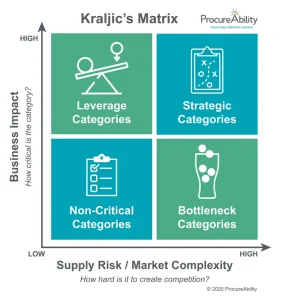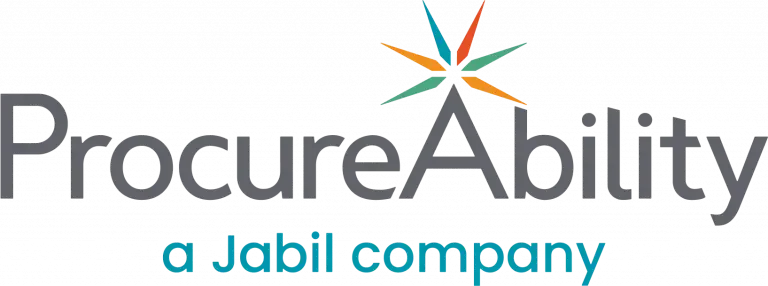
When business demands cause procurement teams to transition from being transactional/tactical groups into teams with strategic roles in the firm, the tools and approaches used by organizations to realize savings must also evolve. During the planning stages of category management, which factors are most important to ensure the best outcome when navigating the supply market?
Viewing a category strategy from the lens of Kraljic’s Matrix is just one of many ways to understand where opportunities lie and how value can be created.
This tool considers two factors to drive strategy:
- Business Impact (Internal)
(How critical is this category to the goals and operations of the business?)
Categories with low business impact are characterized by low expenditure levels, small influence in key functions, as well as tolerance for lengthy lead times before the product is received. The opposite is true for high impact categories – these are identified by high percentages of spend, direct consequence to core business functions, and high sensitivity to delivery windows.
- Supply Risk/Market Complexity (External)
(How hard is it to create competition among suppliers?)
Low supply risk/low complexity categories offer many options, clear buyer leverage, and minimal complications. Categories with high risk and complexity are often handled by a small number of highly technical suppliers, limiting negotiation leverage.

Once these characteristics of a category have been identified and placed on the graph above, the following framework provides a clear path forward when contemplating potential next steps for your category plan:
| Kraljic’s Category Classification | Key Strategies |
|---|---|
| Strategic (High Impact, High Complexity) – Continuous availability is critical and designs/specifications are often nuanced. Few suppliers might have the technical capacity to fulfill needs, making substitution difficult. High executive visibility and involvement is needed. | • Collaboration in Innovation • Joint Process Improvement • Relationship Restructuring • Focus on Total Cost of Ownership • Multiple Organizational Levels of Involvement • Focus on Long Term Availability • Diversification |
| Leverage (High Impact, Low Complexity) – Commonly the largest portion of spend and key to core operations. These categories typically have medium visibility throughout an organization and offer many opportunities for substitute suppliers/products. |
• Exploit Purchasing Power • Focus on Cost/Unit • Minimize Acquisition Costs • Global Sourcing • Volume Incentive Negotiations |
| Bottleneck (Low Impact, High Complexity) – Unique specifications and technical capabilities of suppliers are critical here, however, demand is typically low/non-critical. These categories can be characterized by fluctuating demand and potential storage risk. | • Value Analysis • Cross-Functional/Cross-Organizational Teams • Cost Driver Management • Reduce Exposure to Price Increases/Supply Disruptions • Target Pricing • Ensure Short Term Supply • Eliminate Long Term Need |
| Non-Critical (Low Impact, Low Complexity) – Highly standard products that contribute little to business outcomes with low visibility. Transaction processing costs often outweigh the potential value. | • Best Price Evaluation • Demand Management • Volume Concentration • Efficient Processing • Minimize Time Acquiring |
With a clear vision of how outcomes in your category impact the overall business, you can feel confident in developing a well-prepared plan to engage suppliers. Benefit from improved partner relationships and better outcomes for business operations by taking a proactive approach to anticipate organizational needs and market dynamics by using tools such as Kraljic’s Matrix.
Subscribe to ProcureAbility Insights to access whitepapers, presentations, plus our latest thought leadership.



